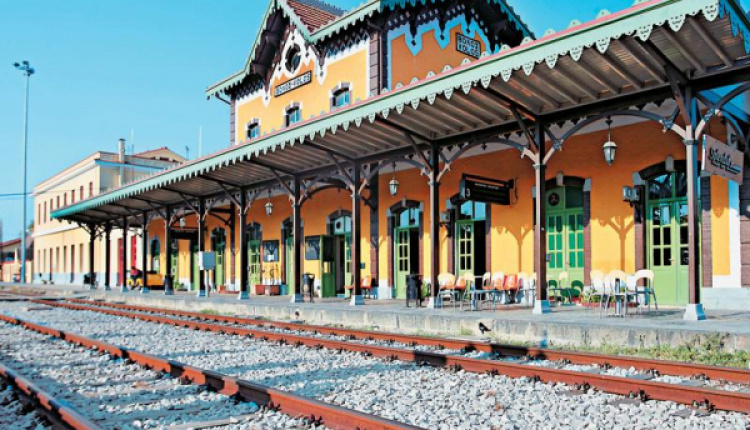Volos Railway Station: An Architectural Gem Standing Proudly For More Than A Century
- by XpatAthens
- Wednesday, 01 February 2023

The railway station of Volos, one of the most famous attractions in the capital of Magnesia, has been characterized as a building of extraordinary architecture.
The building was designed by Italian engineer Evaristo De Chirico, father of the great surrealist painter Giorgio De Chirico. It all started when work on the famous Thessalian Railway, which would connect the port of Volos by rail with Larissa, began in the Thessalian Plain and throughout Western Thessaly.
Construction works started immediately after the liberation of Thessaly in 1881. The building was completed and inaugurated by King George I in 1884. The operation of this railway network was the main reason for the explosive growth of Volos.
With the railway station of Volos, Evaristo De Chirico showed his exceptional talent, in addition to his other creations, just like the uniquely beautiful Pelion train that would follow a few years later.
The colors that decorated the magnificent building in 1884 still remain the same today, 140 years later, constituting a distinct monument and reference point for the capital of Magnesia.
In 1884, when the railway station of Volos was inaugurated along with the Volos-Larissa line, another important element stood at the site. It was the monumental statue of the goddess Athena, the work of the Italian sculptor G. Previsan, which still stands to this day, in the same place, blending harmoniously with the imposing building.
On the first floor of the building, the Railway Museum of Thessaly has been operating for the last 20 years. There, rich and rare relics related to the history of the railways are exhibited. On these premises, the visitor can see old photographs, telegraphs, station clocks, period uniforms, ticket offices, engine parts, railway archives, books on rail architecture, and drawings by Ernest Chirico, all important historical documents.
Originally published in Greek on: iefimerida.gr
The building was designed by Italian engineer Evaristo De Chirico, father of the great surrealist painter Giorgio De Chirico. It all started when work on the famous Thessalian Railway, which would connect the port of Volos by rail with Larissa, began in the Thessalian Plain and throughout Western Thessaly.
Construction works started immediately after the liberation of Thessaly in 1881. The building was completed and inaugurated by King George I in 1884. The operation of this railway network was the main reason for the explosive growth of Volos.
With the railway station of Volos, Evaristo De Chirico showed his exceptional talent, in addition to his other creations, just like the uniquely beautiful Pelion train that would follow a few years later.
The colors that decorated the magnificent building in 1884 still remain the same today, 140 years later, constituting a distinct monument and reference point for the capital of Magnesia.
In 1884, when the railway station of Volos was inaugurated along with the Volos-Larissa line, another important element stood at the site. It was the monumental statue of the goddess Athena, the work of the Italian sculptor G. Previsan, which still stands to this day, in the same place, blending harmoniously with the imposing building.
On the first floor of the building, the Railway Museum of Thessaly has been operating for the last 20 years. There, rich and rare relics related to the history of the railways are exhibited. On these premises, the visitor can see old photographs, telegraphs, station clocks, period uniforms, ticket offices, engine parts, railway archives, books on rail architecture, and drawings by Ernest Chirico, all important historical documents.
Originally published in Greek on: iefimerida.gr
Translated by: Codico Lab

